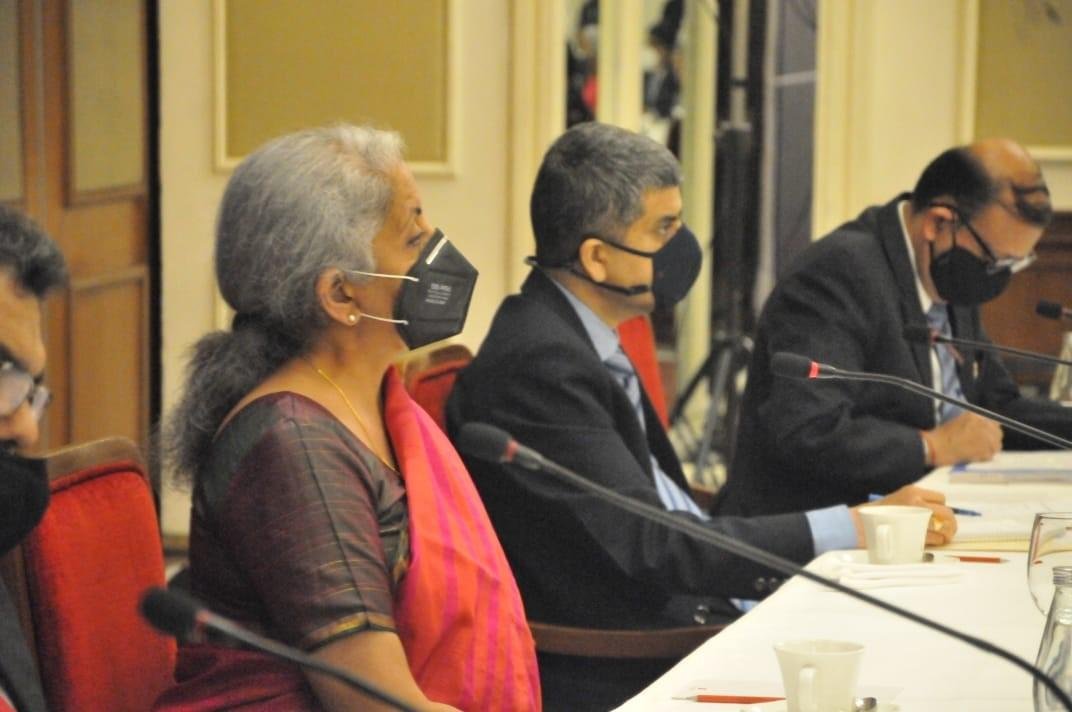The RBI front-loaded 75bps worth of rate cuts in the first half of this calendar year. The outlook for 2H was clouded by the US Federal Reserve’s rate direction and fallout from a weak monsoon.
“These risks have fallen modestly and provide a window for two more 25bps rate cuts within this fiscal year, the first of which we expect this month,” said the bank in its daily economic outlook.
External headwinds abate The Fed extended its on-hold stance in September, signalling the need for more data to justify rate normalization.
Risks to global growth, primarily out of China, and heightened market volatility also received a mention. Against this background, expectations of an imminent US rate hike have dissipated, providing the RBI room to lower local rates.
“Moreover, when the Fed does raise rates, we think India’s rates are unlikely to mirror them as in the past,” it said.
Record high spreads and improved fundamentals will allow the RBI room to keep rates on hold.
Concurrently, the impact of a weak southwest monsoon proved to be more contained than earlier expected. Between June to mid-September, total rainfall was 16 per cent below the long-term average, slightly worse than the 12 per cent shortfall estimated by the Indian Meteorological department.
A bout of catch-up rains in the past week is however expected to narrow the deficit. Pulses and vegetable prices are up modestly since June, but remain far from threatening levels. Non-policy support was also stepped up this year.
The government exercised fiscal restraint and raised minimum support prices for farm produce by less than 4 per cent this year vs double-digits in the past. Global farm commodities are down 23 per cent since 2014, as reflected in the UN FAO food index. Short-term measures like expanding the essential commodities act, release stock of food grains, higher imports, discourage hoarding and black marketing activities etc. have also been undertaken, according to DBS.
These factors have tempered the impact on food price inflation, with latter responsible for more than half of the 3 per cent slowdown in headline CPI inflation since last year.
Domestic short-term pre-conditions have been fulfilled. Apart from the monsoon and Fed hike risks, most of the domestic pre-conditions laid out at the August review have been fulfilled.
Commodity prices (INR terms) have eased further, with the CRB index (Thomson Reuters/ Core commodity index) down 1.5 per cent since August.
Inflationary expectations were also expected to ease in September, mirroring the global commodities’ down move.
From a high of 7 per cent YoY a year ago, CPI inflation fallen to 3.7 per cent in July and August. The central bank had emphasised that it would look through base-effect-distorted inflation readings in these two months but the slower-than-expected sequential pace probably took it by surprise.
“Moreover, our estimates suggest that the impact of below-normal monsoon lasts for 3-4 months, implying that inflation will likely stay within 5.0-5.5 per cent through December,” said the bank.
Next, better policy transmission should also help. To improve the sensitivity of retail rates to policy changes, the RBI proposed a regulatory change whereby banks would need to consider marginal cost of funds to calculate lending rates.
The box that still needs to be ticked is the government’s structural measures, which hit a roadblock at the recent parliamentary session. Few supply-side measures have been fixed and bigger structural changes remain in the slow lane. “We expect the reform agenda to be re-visited after next month’s state elections, implying the impact won’t be felt for some time yet.”
Easing inflation gives the RBI room to cut rates further. Indeed, the debate is now shifting to whether deflation might be a bigger risk than inflation. This emanates from low GDP deflator inflation and a sharp decline in WPI inflation. The latter has fallen for 10 consecutive months to a record low of negative 5 per cent YoY in August. With CPI inflation at 3.7 per cent, the divergence is at an all-time high.
“We don’t believe deflation is a large risk for two reasons,” it pointed out.
Firstly, problematic deflation follows from weak demand. It typically involves corporates/ manufacturers persistently lowering prices to boost demand while households postpone purchases on expectations that prices would fall further, leading to a vicious cycle. Higher frequency data indicators do not suggest that India is in midst of such an environment. Setting aside the 7 per cent headline growth numbers, underlying momentum is turning up. Industrial production growth has stabilized at around a 3-4 per cent pace, credit growth is steadying at lows, rural wages have bottomed and funding costs are set to ease. All these factors should boost investment, while consumption and confidence indices are on the mend. Adjustments to salaries/pensions for armed personnel and seventh pay commission next year should also lift demand.
Secondly, lower commodity prices have played a part in dampening WPI inflation. Fuel and mineral prices accounted for over three-fourths of the fall in headline WPI in the last two months. Easing farm prices and trickle-down impact on manufacturers’ input costs have also contributed to lower inflation.
Finally, unlike CPI, the WPI ignores service sector prices, which are comparatively inelastic and more representative of underlying demand conditions.
“In short, we believe India is going through a phase of disinflation rather than deflation,” the bank stressed.Aggressive rate-cutting cycle is unlikely
“While we see room for measured cuts, scope of an aggressive and extended rate cutting cycle remains slim,” it added.
Base effects are likely to keep inflation firm in Fiscal Year 2017, alongside risks of an upturn in commodity prices. Aggregate demand conditions are also expected to improve in the coming quarters, along with a cyclical upturn in industrial activity driven by higher government spending led boost to infrastructure investments, lower financing costs and easing inflation.
CPI inflation targets are also likely to be adjusted lower over the next couple of years and eventually head to the 4 per cent medium-term goal. This will require the central bank to calibrate monetary policy in an incremental manner. Moreover, structural tailwinds to India’s recovery by way of crucial reforms are on a slow lane, with progress on GST, land acquisition and labour reforms delayed at least until the winter parliamentary session in Nov/Dec.
These factors will see the central bank maintain a prolonged pause beyond the 50bps cuts expected by March 2016.
Indian government bonds look attractive from a total return perspective. As discussed above, external funding concerns have moved to the backburner amid moderate economic growth and low oil prices. Inflation has been falling faster than anticipated.
With the recent Fed pause providing some respite for Asian currencies and interest rates, conditions are looking similar to 2003/2004. Back then, the spread between India’s repo rate and the Fed funds rate was much narrower – around 600bps compared to 700bps today.
Similarly, the yield spread of 10-year Indian government bonds over 1-year USTs was hovering between 50-300bps, versus 550bps today. Current wide spreads between INR and USD market rates are not warranted.
Spread compression between USD and INR market rates are likely over the medium-term as the RBI cuts rates amid Fed normalization.
“By 1Q16, we expect 10-year Indian government bond yields to fall towards 7.6 per cent, registering total returns of 9.0 per cent (holding period return of 4.5 per cent over six months).
By comparison, 10-year USTs are expected to bring total returns of -0.3 per cent (holding period return of -0.2 per cent) over the same horizon. The calculations are in local currency terms.
In the event that Fed normalization proves to be slower than anticipated, USTs and the Indian government bonds are likely to perform better than our baseline scenario.
However, outperformance of Indian government bonds over USTs should still be significant as the RBI would have more room to ease policy.
fii-news.com









